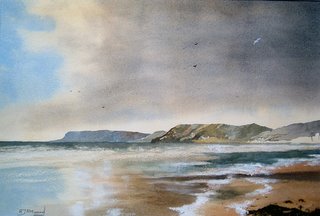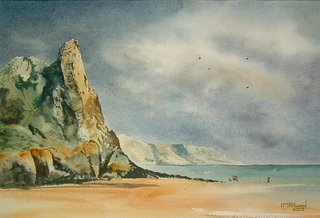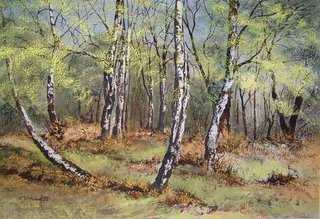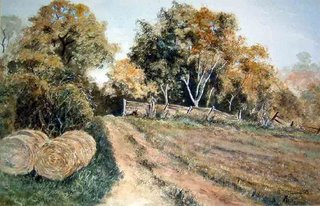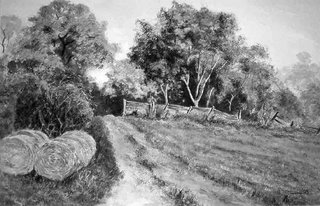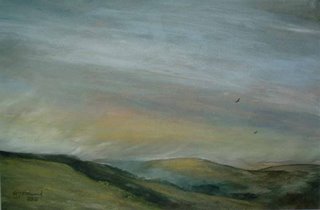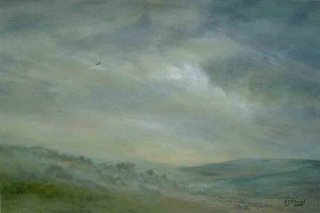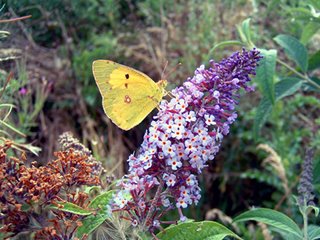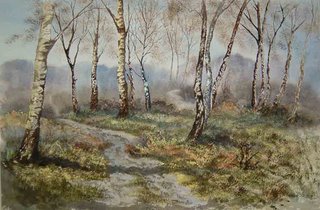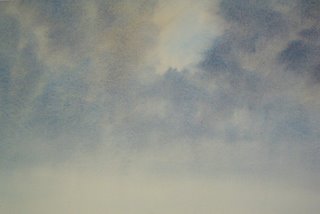
' Spring Birches' Acrylic Watercolour
I think this must be the single most important ambition of all beginner painters, to establish a style of their own. To achieve a look to their work that makes their pictures stand out from the rest as being uniquely theirs.
The books written to teach painting techniques are filled with illustrations by established artists which have definite characteristics. These characteristics make the works of each of the artists readily recognisable as their work. It also makes their pictures different from those of all other artists even if the pictures are of identical subjects.
It is this uniqueness which appeals to the beginner artist but how does it come about?
By all means learn from these artists. Adopt some of their ways of working, if they work for you. But do not deliberately try to copy their style, because in this way you will only produce second rate pictures in the style of the artist you happen to rate highly at that particular time. Next week, next year you will be copying someone else
The way an artist works - the techniques, materials and tools they use - all have some bearing upon the style they finally acquire. You note I say finally because that is the way it comes about. It doesn’t happen overnight.
Now this next point is really crutial. It does not come as the result of deliberate attempts to make their work unique. It comes about by itself as the result of trying various techniques and ways of working. Adopt those which work and bring success. Rejecting any procedure that fails repeatedly to give the desired results. Experiment with and incorporate methods that work. Reject those that don’t.
Bit by bit your accumulated methods and ways of working start to give a distinctly original appearance to your work. With more trial and error the uniqueness becomes more definite, even so, the dedicated painter continues to try new ideas and methods, new materials and tools. I have been drawing and painting for a good many years and I am still learning.
As time goes by, these distinct features of the artists' work evolve and change in subtle ways. Even an established artists style changes over the course of time. But this only happens if the artist remains open to new ideas and working methods.
Some become stuck in a rut. Their work has a style and is easily recognised but having seen several examples, their work becomes predictable and less interesting.
Do not become a slave to style. Practise and paint for the sheer pleasure it brings, not only to you but to those who see your work. Bit by bit the style, which makes your work unique, will happen. Collectors will seek out your work. Yet always keep an open mind. Remain receptive to new ideas. Your style will become more established but will still evolve as your work becomes more mature.
Keep experimenting and learning. Don’t ever become complacent, even when you think you have style.
That's it for today. Tomorrow I shall be talking about atmosphere and mood. 'Till then take care.
Tony



